1. The polite nod to strangers
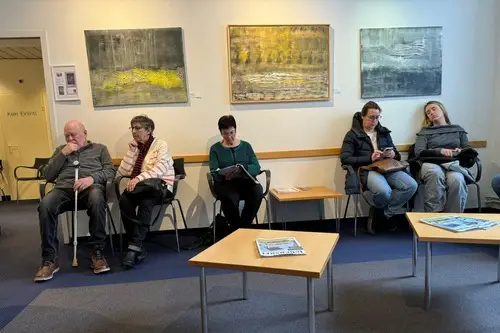
There’s something about a waiting room that makes people acknowledge each other with a small nod or faint smile, even if they never exchange another word. It’s a low-effort way of saying, “I see you, I’m in this with you, and I’m not a threat.” Social psychologists note that these micro-gestures often act as nonverbal icebreakers in shared, temporary spaces. In a more familiar setting, you might skip this entirely, but here it feels almost required.
The nod serves to establish a quiet sense of community among people who have no other connection. It’s brief enough not to start a conversation you might not want but still satisfies our need for minimal social contact. You’ll notice it most when you first enter and take your seat. Once you’ve done it, the unspoken pact of polite coexistence begins.
2. The ritual of seat selection
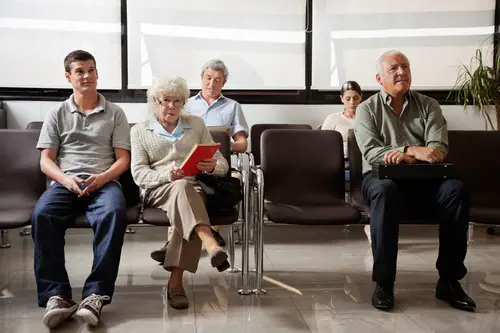
Choosing a seat in a waiting room can feel like a mini social chess game. Most people instinctively avoid sitting directly next to someone unless there’s no other option, a behavior rooted in the desire for personal space. Anthropologists have observed similar patterns in bus stops, libraries, and other public seating areas. It’s an unspoken rule that everyone seems to understand without being told.
People often scan the room for the “Goldilocks spot” — not too close to others, but not so far that it looks antisocial. Proximity to doors, reading materials, or windows can tip the scales in a seat’s favor. If someone chooses a seat right next to you in an otherwise empty room, it’s often perceived as unusual or intrusive. The act of picking a seat is more about managing social comfort than actual convenience.
3. Overly intense magazine flipping

Waiting rooms are one of the last strongholds for printed magazines. People often grab one, not necessarily to read, but to signal that they’re occupied and less available for conversation. This “I’m busy” signal is subtle but effective in avoiding unwanted interactions. The actual reading may be more about passing time than genuine interest in the content.
Sometimes the flipping becomes unusually brisk, as if speed can make the wait feel shorter. You might notice people skimming articles without fully processing them. It’s more about the tactile distraction — the sound and motion of turning pages — than deep reading. In a world full of smartphones, the magazine still holds its place as a socially safe prop.
4. The competitive glance at who arrived first
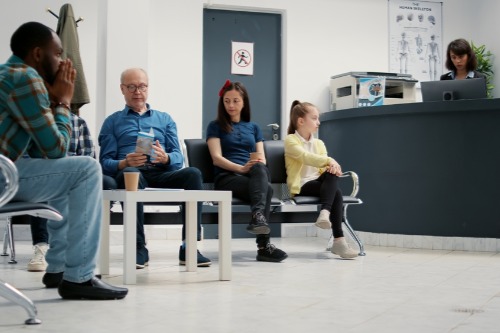
When a receptionist calls someone’s name, the rest of the room often takes quick stock of who’s left. People quietly keep track of who came before them, even if there’s no actual competition. This behavior is tied to our sense of fairness and our dislike of being “cut in line.” It’s especially noticeable if someone gets called unexpectedly early.
These glances are rarely hostile — they’re more about reassurance that the process is moving in the right order. If someone new is called quickly, you’ll often see raised eyebrows or puzzled looks exchanged. Sometimes, it’s because of different appointment types, but the assumption is often that “they must know someone” or “they had special circumstances.” It’s a reminder that humans are naturally attuned to perceived equity.
5. Whispered conversations that still carry
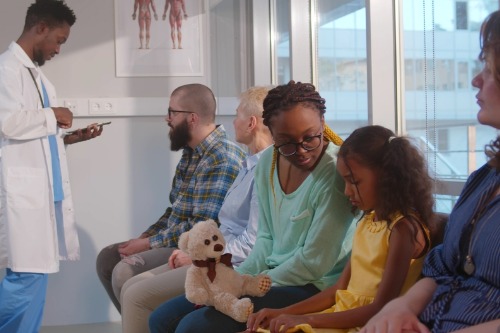
In a quiet waiting room, people tend to lower their voices out of politeness. Ironically, this sometimes makes them more noticeable, because others have to strain to ignore them. The result is a strange blend of muffled words and crystal-clear phrases that drift through the air. You might not get the whole story, but you catch just enough to know you probably shouldn’t be hearing it.
This behavior stems from the instinct to maintain privacy in semi-public spaces. Unfortunately, acoustics often work against it, especially with hard floors and walls. Even whispers can bounce around and reach unintended ears. It’s one of those quirks where the effort to be discreet can draw more attention.
6. The phone-checking loop

People in waiting rooms often fall into a repetitive cycle of checking their phone, putting it down, and then picking it back up moments later. This is partly due to boredom and partly because the environment offers no other pressing tasks. Studies on idle time show that our brains crave microbursts of stimulation in such moments. The phone becomes a default pacifier.
You’ll see this loop happen even when no new notifications arrive. The simple act of unlocking the screen, scrolling briefly, and locking it again can feel comforting. It’s a small way to control an otherwise unpredictable wait. It also subtly signals, “I’m occupied,” much like the magazine trick.
7. The shared glance when someone’s called in

When a staff member appears to call the next person, almost everyone looks up instinctively. It’s part reflex, part curiosity about who’s leaving next. This shared glance creates a moment of collective awareness, even among total strangers. It briefly unites the room in a common focus.
People may also use this moment to gauge their own position in the wait. It can feel like progress, even if you’re not the one being called. The behavior mirrors similar reactions in lines at airports or cafeterias. It’s a subtle reminder that humans are deeply tuned into the movements of others in shared queues.
8. The awkward leg shuffle

Sitting for an extended time in a waiting room often leads to subtle fidgeting. People cross and uncross their legs, tap their feet, or shift positions repeatedly. This can be due to restlessness, discomfort, or nervous anticipation. Such micro-movements also serve as a release for pent-up energy.
Observers note that these movements can be mildly contagious, triggering similar adjustments in nearby people. You might find yourself shifting simply because someone else did. It’s a low-level form of social mimicry, common in shared environments. While usually subconscious, it reflects our tendency to sync physical behavior in group settings.
9. Eavesdropping without meaning to

In close quarters, overhearing fragments of other people’s conversations is almost unavoidable. You may not intend to listen, but the lack of other distractions makes your brain latch onto any available sound. This can happen even when you’re trying to focus on your own thoughts or a book. Cognitive scientists say it’s because human brains are wired to detect and interpret speech.
This accidental eavesdropping can lead to odd moments of familiarity with strangers. You might hear them talk about their pet, their weekend plans, or a funny anecdote, and feel like you “know” them slightly. In another context, you’d tune it out, but here, your attention has fewer competitors. It’s one of the subtle ways waiting rooms turn strangers into background characters in each other’s lives.
10. The purse or coat “territory marker”
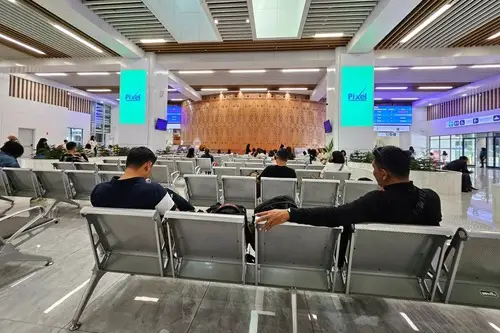
People often use personal items to claim a bit of extra space in a waiting room. A bag placed on the adjacent chair, a coat draped over the armrest, or even a coffee cup on a nearby table can signal “this spot is taken.” This behavior is rooted in the same territorial instincts seen in public seating everywhere. It creates a small buffer zone between yourself and others.
Sometimes, these markers are entirely practical — maybe the seat is genuinely being saved. But more often, they’re about maintaining comfort and privacy in a shared space. People rarely challenge these unspoken claims, even if seats are scarce. It’s a polite fiction that everyone agrees to uphold.
11. Overanalyzing the receptionist’s tone

The receptionist often serves as the unofficial mood-setter of the waiting room. People will sometimes read deeply into their tone, body language, and facial expressions. A cheerful greeting might ease everyone’s tension, while a curt response can heighten anxiety. This interpretation can happen even if the receptionist’s demeanor is completely neutral.
The stakes feel higher here because this is the gateway to the next step, whether that’s a medical exam, a job interview, or another significant event. People look for cues about what might happen next, even if there’s no real information to be gained. Our brains are wired to pick up on micro-signals in uncertain situations. In a quiet room, these signals can feel amplified.
12. The time-check chain reaction
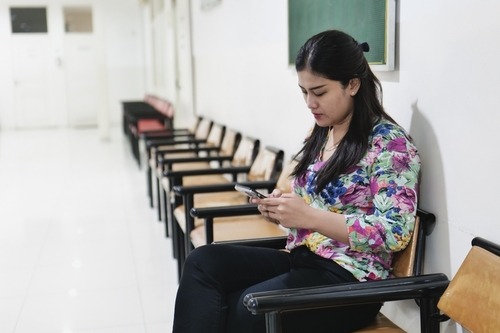
When one person checks the clock, it often prompts others to do the same. This is a classic example of social contagion, where one small action spreads quickly through a group. The behavior is more noticeable in environments where everyone shares the same underlying question: “How much longer will this take?” Waiting rooms fit that perfectly.
This can happen with watches, phones, or wall clocks. Once you notice someone else checking the time, you become more aware of your own impatience. It’s a shared acknowledgment that the wait is dragging on. The more people participate, the more it reinforces the perception that it’s taking forever.
13. Pretending not to listen to important announcements

When an announcement is made — whether over a speaker or by staff — people often act like they’re not paying attention, even though they clearly are. This is a way to maintain privacy and avoid appearing too eager. It’s a small social performance where you pretend the information just happens to reach you. In reality, everyone’s ears perk up at the same moment.
This tactic allows people to process information without inviting conversation. You might see someone glance briefly toward the source of the announcement, then quickly look back at their phone or magazine. It’s a balance between staying informed and staying socially neutral. In waiting rooms, where privacy is prized, this becomes a default strategy.
14. The synchronized exit shuffle
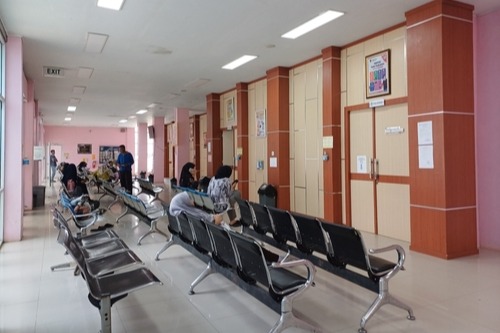
When one person is called in, there’s often a minor rearrangement among those who remain. Someone might shift seats to a better spot, grab a newly freed magazine, or move closer to the door. This is an example of how small environmental changes trigger a cascade of micro-decisions. The shift is almost always subtle, but it’s there.
People take advantage of the moment to improve their own waiting conditions. The room feels slightly reset, and everyone reassesses their position. Even if nothing changes for you personally, there’s a momentary awareness of the new configuration. It’s a reminder that in shared spaces, small movements ripple outward.
This post 14 Social Behaviors That Only Happen in Waiting Rooms was first published on American Charm.


